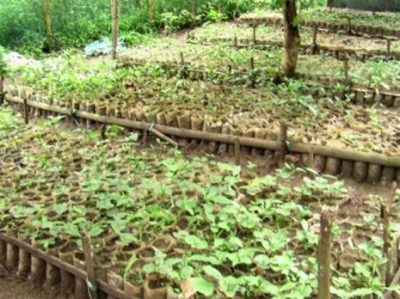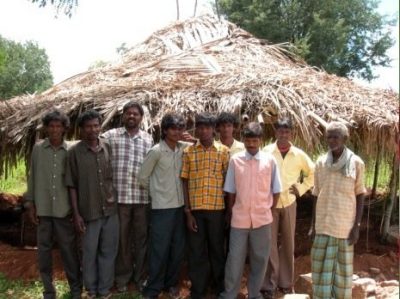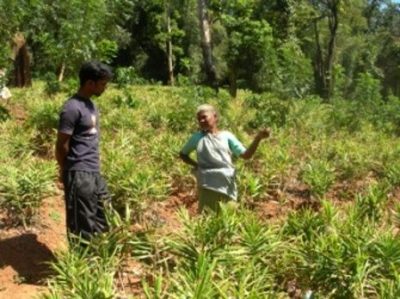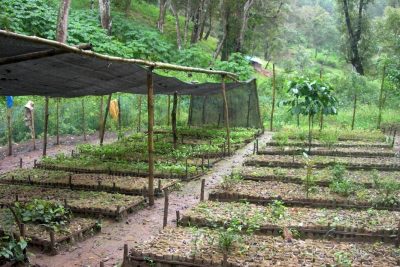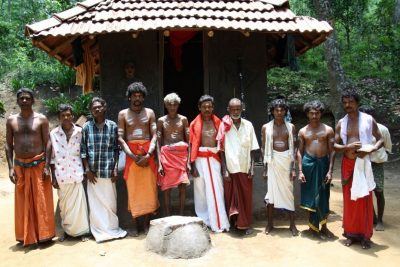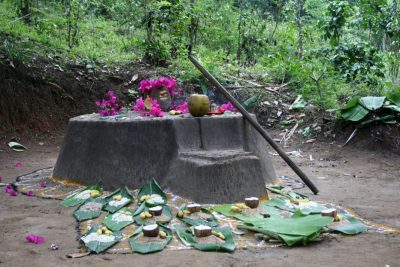What is Biocultural diversity?
The Convention on Biological Diversity (CBD) defines biological diversity as: “The var-iability among living organisms from all sources, including inter alia terrestrial, marine and other aquatic ecosystems and the ecological complexes of which they are part; this includes diversity within species, between species and of ecosystems.”
According to the UNESCO Declaration on Cultural Diversity (2001) “Cultural diversity is considered to encompass all communities in the world, each of them with their own identity determined by ethnicity, history, language, religion and art.
Cultural diversity may be understood as, but not limited to, diversity in:
- Practices (rituals, produc-tion systems and knowledge transmission systems)
- Ways of living together (social systems including institutions, legal systems, leadership and tenure systems)
- Value systems (religion, ethics, spirituality, beliefs and worldviews)
- Knowledge (know-how and skills)
- Languages
- Artistic expressions (art, architecture, literature and music
Therefore Biocultural diversity can be defined as “the diversity of life in all its manifestations: biological, cultural, and linguistic, which are interrelated within a complex socio-ecological adaptive system.
The diversity of life is made up not only of the diversity of plants and animal species, habitats and ecosystems found on the planet, but also of the diversity of human cultures and languages” (def. by L. Maffi).
Biocultural diversity is derived from the myriad ways in which humans have interacted with their natural surroundings. Their co-evolution has generated local ecological knowledge and practices: a vital reservoir of experiences, methods and skills that help different societies to manage their resources.
INTERVENTIONS ON BIOCULTURAL DIVERSITY
Biodiversity conservation and livelihood enhancement have often been considered as contradictory concepts; however a reconciliation between them represents the only solution for indigenous communities to develop themselves in respect of their identities. The international community has recognized the close and traditional dependence of many indigenous and local communities to biological resources. Even though there is a broad recognition of the contribution that traditional knowledge can make to both the conservation and the sustainable use of biological diversity, in India there is still a lot of resistance by local authorities and Forest Department in acknowledging the importance of local communities in managing biodiversity in forest areas.
The main attempt of these interventions is to facilitate indigenous community to use and preserve biodiversity through a win-win strategy. These communities live close to forest areas and use forest products for various purposes such as housing, firewood, medicine, food, etc. In India in particular, traditional societies give to these products a relevant social and cultural significance. Non Timber Forest Products (NTFP) play an important role in traditional livelihoods, and sustainable management of forest is crucial for indigenous communities. For indigenous communities the concept of development is closely linked with the state of nature and their environment. For them well-being necessarily encompasses their access, management and control over lands, territories and resources under customary use and management, all of which are critical for their own sustainable development. The biggest challenge faced by indigenous peoples and their communities in relation to sustainable development is to ensure territorial security, legal recognition of ownership, use and control over customary land and resources.
CONSCIOUS JOURNEYS AND BIOCULTURAL DIVERSITY
One of the main objectives of Conscious Journeys since its constitution is the protection and promotion of biological and cultural diversity in South Asian countries. In particular, Conscious Journeys is engaged with local and indigenous communities as to enable them to obtain a fair and equitable sharing of benefits arising from the utilization of their natural resources and their associated knowledge.
Practically, Conscious Journeys promotes products, such as organic agricultural and agro-processed products, non-timber forest produces, textile and handicraft products, tourist itineraries, based on bio-cultural heritages.
All our projects related to biocultural diversity are always carried out in partnership with local and national Institutions, private companies, community based organisations and non-governmental organisations. Conscious Journeys supports several initiatives in different locations in India where our partners are actively involved in conservation of biocultural diversity.
However, our major and direct effort is in a region of South India called the Western Ghat of the Nilgiris (literally Blue Mountains), situated at the junction of the three States of Tamil Nadu, Kerala and Karnataka which covers an area of 2479 square kilometres. The Nilgiris is one of the most ecological fragile areas, and it has been declared the first bio-reserve in India in 1986 by UNESCO under the “Man and the Environment” programme. Most of its vegetation has been replaced by monoculture tea and coffee plantations and converted into cultivable land during the British colonisation. The small indigenous population has generally been affected by migration of other communities moving from different part of the Country.
The hills of Western Ghats remained isolated for a long period of time from the rest of the country and become the abode for certain communities who could adapt themselves to the forest and shape their lives through livelihood strategies as pastoralist, artisans, sorcerers, gatherers, hunters and farmers. These indigenous people had established a strong co-existence and linked themselves in ritual, economic and social symbiosis for long time. Presently the number of migrant communities outnumbered the indigenous people of these hills. According to a 1991 census, the total population of the Nilgiri is 710,214, out of which the total tribal population is 25,048, constituting 3.53% of the total population.
THE PROJECT: PROMOTION OF SUSTAINABLE LIVELIHOODS AND BIODIVERSITY CONSERVATION IN THE NILGIRI BIOSPHERE.
The project aims at developing and implementing on a micro scale a replicable model that improves livelihood opportunities of Kattunayakans based on a sustainable and equitable use of their natural resources.
General Objective:
To ensure participatory and equitable use of natural resources, supporting bio-diversity conservation and sustainable livelihood strategies for the indigenous communities of the Nilgiri Biosphere.
Specific objectives:
To empower the Kattunayakan community living in the buffer zone of Mudumalai National Park by promoting their rights and sustainable bio-diversity actions.
Conscious journey and its partners created and empowered a CBO, so that Kattunayakans will become more capable to plan, implement and manage their own development and to negotiate with the relevant authorities (Forest Department in particular), promoting good governance in the forest sector. The activities address indigenous peoples’ concerns over forest land and access to forest resources, with a specific focus on legal and institutional questions, and policy reform.
expected results
1) Creation of a Community based Organisation as to allow indigenous communities to assert their rights and plan their own development
One of the output is the creation of a Community Based Organisation (CBO) of Kat-tunaickans, which will benefit from the experience and support of the two already ex-isting CBOs such as EAKMS, (Erumad Adivasi Kurumba Munnetra Sangam) a community based organisation composed of the Mullu Kurumba indigenous people, and VTMS (Vi-vasaigal Thozhilalargal Munnetra Sangam) a people’s movement and community based organization formed by small and marginal farmers and agricultural labours.
The creation of a Kattunayakan organization is facilitated by the achievements and experience of other very active local indigenous people Organisations. In this way Conscious Journey promotes a common platform among indigenous groups of the Nil-giri in order to undertake shared initiatives to get their rights over forest recognized. The experience of EAKMS is instrumental for the creation of the newly formed Kattun-aickan Organisation as to increase self-esteem of this particular group, promoting a sense of active solidarity among different tribal groups, allowing them to find shared solutions and strategies to improve their quality of life. This will support raising awareness on their rights and their cultural identity, and fostering solidarity within Kattunayakan community in a wider context.
The following activities are foreseen to achieve this result:
• Creation of a Gram Sabha at the village level
A Gram Sabha (village assembly) will be created in all the villages of intervention. A preliminary meeting have been hold in all the villages in order to explain the functions and structure of the village Assembly. Resource persons facilitate the creation of village committees that will be responsible to held regular meetings at the village level. Capacity building on PESA are given in each village by experts. People are facilitated to discuss about their problems and concerns in the village in order to find shared solutions and to bring those instances in wider forums such as their own CBOs and VTMS. This would enable them to assert their rights and to voice their complaints and concerns with local authorities.
• Leadership training to the selected village representatives and creation of a Kattunaick-an CBO
Some members from each of the selected hamlet have been identified to be trained as leaders of their own community. A training has beeen organised for them according to a module of two sessions every month for eight months. These trainings would ensure them to acquire the skills to assert their rights and capabilities on approaching relevant authorities to know about their welfare schemes. The sessions will develop also their knowledge on the recent Forest Rights Act enacted by the Government of India in 2006. This Act aims at addressing the historical injustice done to those communities whose forest rights have so far not been legally recognized. A participatory methodology is followed to ensure that these trainings will result in formation of the Kattunayakan Sangam. This Association will be the back bone of every development issue to be initiated for this community.
• Networking with Kattunayakan CBO with EAKMS and VTMS and capacity building of leaders of the three different forums
This activity is very important in order to identify a common platform where marginalised groups can take joint and broader initiatives on common problems and concerns. All the leaders are trained on the Forest Rights Act in order to enable them to claim their rights on forest land. Several leaders from all the three different CBOs have been identified in a consultation with all the members in order to be trained on human rights with particular reference on forest rights.
2) Enhancement of livelihood opportunities of the target group through adoptions of environmental sustainable practices
Securing the livelihoods of forest-dependent peoples and conserving biodiversity they depend on requires good governance and sustainable management of common-pool forest resources. This component of the project will strengthen cultural and biological diversity of the area, making indigenous communities the real agents of conservation of their own resources. The approach of this intervention is based on a promotion of a community based conservation area where cultural values and local knowledge of indigenous communities dependent on forest will be promoted.
The following are the activities proposed to achieve this result:
• Training on organic farming
It is proposed to impart trainings to farmers on various dimensions of organic system. The concepts, relevance and scope of organic farming is imparted to the families to orientate them at the beginning of the project. More technical training on management practices (soil and water management), different composting systems, bio-fertilizers and liquid fertilizers are carried out at the village level in order to train people on the job with very practical sessions. Soil and water conservation, crop designing, different composting models etc. also is demonstrated.
• Integrated farming of different food crops and cash crops – vegetables, cereals, tubers, spices, pepper, coffee, cardamom and areca nut etc.
Homestead gardens are important for improving food security of the target community and the cultivation of cash crops like coffee, pepper, areca nuts and cardamom which are ideal to the climatic and soil configuration of the village. The creation of nurseries of coffee and pepper plants will enable to spread this cultivation also in the other villages. Establishment of homestead gardens is promoted through the creation of an organic seed bank. Other local varieties of vegetable are promoted through the establishment of recycling systems of home and farm wastage and other composting systems. Women have a prominent role in this, given their role of repository and keepers of traditional knowledge and being in charge to transmit their knowledge to young generation. Women are given priority in distribution of seeds. A model organic farm with cash crops has been raised in accordance with organic standards; a mother nursery of coffee and pepper has been created at every family level. Low External Input Sustainable Agriculture (LEISA) approach is promoted under organic system of this project.
• Marketing of NTFPs
Forest Department (FD) does not always allows the collection of NTFP in these areas, especially inside Wildlife Sanctuaries. Training on sustainable harvesting, value addition, accounts and management to Kattunayakan people belonging to the Sangam. A collection center with some basic processing equipment is created as to promote value addition of cash crops and forest produce, honey in particular. This center will be useful and accessible to the people of the area.
3) Community initiatives based on local knowledge and perspectives are promoted in order to safeguard the biological and cultural diversity of Mudumalai National Park
The activities for this results are:
• Performance of a traditional festival inside the forest
Given the importance of initiative to preserve traditional culture and heritage of tribals this activity will help Kattunayakan community to safeguard their traditional customs. Due to severe financial problems people had been not been able to perform their traditional festival inside their temple in the forest. This will promote the cultural diversity in a so called sacred-grove. The festival is held every month of April according to their traditions and represents an occasion to celebrate their environment through the creation of a nursery of plants located in their sacred grove.
• Participatory mapping of the vegetation of Mudumalai Sanctuary and establishment of nursery at village level of bamboos and endangered species at the village level
This activity will ensure the right of primary stakeholders, such as the target communities, who depend on biodiversity, to access and protect biological resources and related knowledge essential for ecosystem benefit and livelihood security. A nursery is created, where to raise forest and shola species that are recognized of fundamental importance by people and Forest Department. We promote an active participation from the villages in order to protect a tract of forest located in the forest area adjoining the selected villages. Cultivation of bamboo in the nursery has been a priority in order to replant these species in the area where they have been cut as to satisfy the community’s need for house construction.


